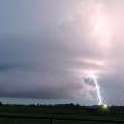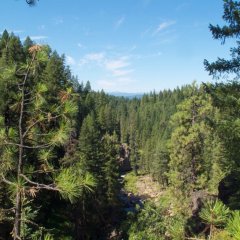-
Posts
16502 -
Joined
-
Last visited
-
Days Won
39
BLI snowman last won the day on June 22
BLI snowman had the most liked content!
Profile Information
-
Gender
Male
-
Location
Ridgefield, WA
Recent Profile Visitors
BLI snowman's Achievements
-

July 2024 In The Pacific Northwest
BLI snowman replied to snow_wizard's topic in West of the Rockies
Europe vs. North America. -
Colville had a 10/-6 average split that month. So a solid 3+ degrees colder than January 1937, which is their coldest month at the modern station. March 1867 was also absolutely wild there. Colville hit -20 on the 12th. That's a number they've had a really difficult time achieving even in midwinter airmasses in this century so far, although they did finally get to -23 with the December 2022 event. They also hit at least -33 in January 1875, which would tie December 1968 with the all-time low.
-
Yep, Fort Steilacoom and Fort Vancouver both have their datasets run back to 1849. Some incomplete and obviously questionable data mixed, but still paints a pretty great picture of things from back then. Also have Fort Walla Walla back to 1857 and Fort Colville back to 1859 for an eastside barometer. Let me know if you'd like an CSV copy of any of them, I'd be happy to PM you.
-

July 2024 In The Pacific Northwest
BLI snowman replied to snow_wizard's topic in West of the Rockies
Of course the GEM went the other direction. NAM also not on board for much south of Olympia. Hopefully if nothing else there'll be a lot of low topped drizzle that the models don't pick up on. -
Nothing like today. Eola's maximum observed temps by year: 1870: 93 (although this was a higher end heat wave there in early July and Seattle actually reached 100 at a station in the city) 1871: 91 (Eola had back to back 58/52 days on July 27-28 with light rain) 1872: 88 (cool summer, Eola again had a 57/51 on July 28 with light rain) 1873: 93 (Eola pulled off a 54/52 with rain on July 12) 1874: 89 (pretty consistently pleasant summer, no significant cold) 1875: 90 (actually a fairly warm July for the time) 1876: 91 (Eola is missing data from the June heat wave which got Portland to 99) 1877: 89 (consistently cool throughout and fairly wet) 1878: 94 (one and done heat wave in early June, cool midsummer) 1879: 90 (another consistent warm midsummer stretch but nothing like today) Several things to keep in mind are the observed highs are from 2pm readings, so these were likely a few degrees underdone during the summer. But this is also the Salem area that we're talking about, which even in the 1870s probably ran a good 7-11 degrees warmer on average than most of western WA near the water. The Seattle area was likely barely breaking 85 in a lot of these years. Most of these summers were just scraping into the 90s at their hottest points in the mid Willamette Valley. So kind of the rough equivalent of modern day Whatcom County. The relative lack of days even in the high 80s tells me that even with the true highs being a bit warmer, there was relatively little in the way of hot offshore flow back then. The default patterns were 65-85 all the way for western OR in the midsummer. The warm season was also much more abbreviated back then and you could usually count on one end of the warm season or another to feature a prolonged <70 stretch with what appeared to be extensive cloudcover.
-
Yeah, 1871-72 was the best all around winter of that decade and cracked 50" for snowfall in Portland overall. Not as continuously cold as some other greats, but what it lacked in continuity it made up for through having a large number of quick arctic airmasses spread throughout the season. Something more akin to the Eastern US. January 1875 was just insane. Astoria had a high of 12 on the 13th, that's 7 degrees lower than their modern record low maximum. New Westminster, BC right outside of Vancouver had six consecutive sub-zero lows and a monthly mean of 21.56F which is about dead even with January 1950 up there. Astoria also pulled off a nutso 33/29 on April 4, 1875. Not sure I buy that one, but that was clearly a hell of an airmass. Feel free to share whatever Seattle data you have in this thread. It's fun to piece these 19th century winters together and get some sense of a play-by-play for the region.
-
Recently got access to some 19th century data for Western Oregon from Eola, which is just west of Salem. Data runs from 1870-1892. The 1880s and 1890s are a little more accessible data wise, but I thought I'd share some 1870s winter highlights for anyone who's interested since that timeframe tends to pre-date most of the info we have online through the NCDC/NOAA. January 1870: Two arctic events, the first peaking with a 30/17 on the 4th and the second peaking with a 24/16 day on the 18th with some overrunning. March 1870: Absolutely historic event. 28/20 on the 13th, 28/22, on the 14th, and 35/31 on the 15th. This one produced a huge overrunning snow event for what seemed to be most of the region, as well as some arctic front snow on the 12th. December 1870: Very cold month, every high from 11th-27th was under 40. Cold wave peaked on the 21st with a 30/9 day. January 1871: 32/27 on 17th with an overrunning storm. November 1871: Early snow and arctic air with a 32/29 on 26th and 30/27 on 29th. December 1871: Another huge month with two major airmasses. First one peaked at 20/17 on the 18th and the second peaked at 19/7 on the 26th. No snow data but clearly a ton fell with a very white Christmas. January 1872: Another chilly month with a 35/14 on the 25th and a 32/28 overrunning on the 30th. February 1872: 25/8 with a 9" snowstorm on the 5th. November 1872: Historic early event with a 29/26 on the 13th and 28/26 on the 14th. No snow data but I know that Portland had its earliest significant snowstorm on record with this. December 1872: Quick cold wave with 29/24 on the 16th and 30/27 on the 17th. Maybe some inversion magic? February 1873: Impressively cold month throughout, with a 31/24 on both the 1st and 2nd. Also a 36/28 on the 7th, 36/30 on the 16th, 35/26 on the 25th, and 36/32 on the 26th. Kind of February 2019-esque. November-December 1873: This one unfortunately is missing December data but another great stretch. First a very early cold wave with 39/33 on November 2nd, then a 7.5" snowstorm on the 30th that ushered in a huge two week cold wave that froze the rivers and produced single digits in Portland, and dropped significant snow down to Sacramento. March 1874: 8" of snow noted on the 3rd, though the daily temp readings were 45/36. A very wet and sloppy snow, but Portland had 15" and Astoria about 8" that month so it checks out. Andrew probably got buried. January 1875: Historically cold month with nine subfreezing highs, four of which were under 20 . This included an 8/4 day on the 13th with 5" of snow, and a 13/8 transition day on the 18th with 4" of snow. Low of 2 on the 17th. April 1875: A 38/27 day on the 4th. Probably the latest semi pure arctic air advection on record in NW OR. January 1876: Extended late month cold spell. Included 25/20 on the 22nd with 2" of snow, and a 34/28 on the 27th with 4.5". 1876-77 and 1877-78 were mostly sucky Nino years. Yes, they happened back then as well. Still managed a few subfreezing highs in December 1876 from an inversion, and a little cold spell in early January 1878 that produced a 32/17. January 1879: Extended cold wave around New Years which peaked with a 32/14 on the 4th. Looks like the Willamette Valley missed out on the big February snowstorm later that winter that nailed Portland and Seattle. December 1879: Unlike the early January 1880 snows, this one was focused over NW OR. Amazing event for the valley with a 13.5" snowstorm on the 20th followed by an 18/-8 day on the 23rd. The rest of the 1879-80 winter was also pretty great for the valley though, with 12" late in January 1880 and a 5" snowstorm on February 16 with a 35/24. Also snowed 4.5" in early March and then there was a 38/28 on March 12 and 38/34 overrunning on March 16 with a late season arctic airmass.
-

July 2024 In The Pacific Northwest
BLI snowman replied to snow_wizard's topic in West of the Rockies
Fairly wet and especially by recent standards, but mostly from convective precip in early July and late August. In terms of stratiform rainmakers there were just a couple of small <0.25" events. -

July 2024 In The Pacific Northwest
BLI snowman replied to snow_wizard's topic in West of the Rockies
This definitely has legs. First real stratiform rain here in July in about a decade. Never has been common, but it's gotten rarer and rarer. -

July 2024 In The Pacific Northwest
BLI snowman replied to snow_wizard's topic in West of the Rockies
Some flash flooding would be nice. -

July 2024 In The Pacific Northwest
BLI snowman replied to snow_wizard's topic in West of the Rockies
As is the Ate-Een-Zee. The death ridging the following weekend is gonna be quite humid with all of that fresh soil moisture. Phil is gonna be jealous. -
Ford did at least get votes in the 1976 primaries though, which distinguishes him from Harris this year. The 1976 RNC was actually the last seriously contested convention, though you could argue 1980 with Ted Kennedy. Reagan very nearly pulled off unseating Ford, with him receiving 47% of the delegate vote. https://en.wikipedia.org/wiki/1976_Republican_National_Convention And in every contested convention like this, it seems the other party has won the election.
-

July 2024 In The Pacific Northwest
BLI snowman replied to snow_wizard's topic in West of the Rockies
Just looking at that height configuration, you can tell that it's probably been pretty wet in SE AK right on the divergent side of the low pressure. And sure enough, Juneau has already broken their all-time monthly record with 10.64" in the bucket and plenty more rain still to go. Their previous July record? 2015! -
He was still pretty with it here, I think. No comparison to the way Biden is right now, and this was 3 years post-presidency for him.
-

July 2024 In The Pacific Northwest
BLI snowman replied to snow_wizard's topic in West of the Rockies
Car crash winter incoming for us all














